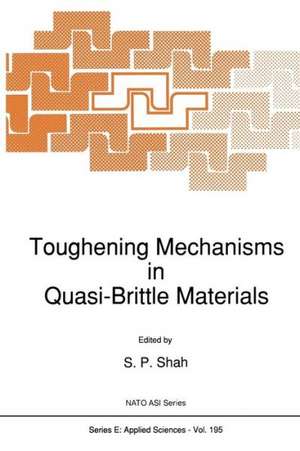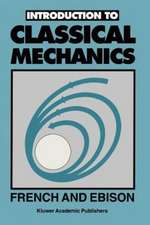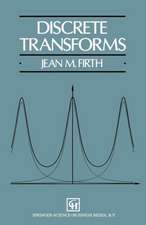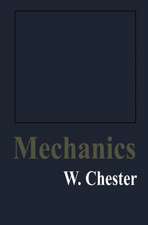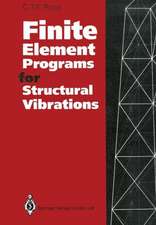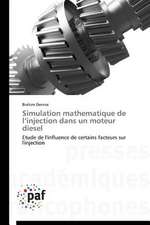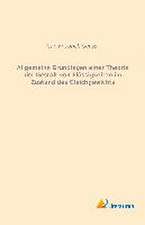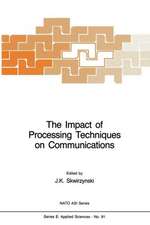Toughening Mechanisms in Quasi-Brittle Materials: NATO Science Series E:, cartea 195
Editat de S. P. Shahen Limba Engleză Paperback – 5 noi 2012
| Toate formatele și edițiile | Preț | Express |
|---|---|---|
| Paperback (1) | 407.19 lei 6-8 săpt. | |
| SPRINGER NETHERLANDS – 5 noi 2012 | 407.19 lei 6-8 săpt. | |
| Hardback (1) | 601.09 lei 6-8 săpt. | |
| Kluwer Academic Publishers – 31 mar 1991 | 601.09 lei 6-8 săpt. |
Din seria NATO Science Series E:
- 24%
 Preț: 1570.65 lei
Preț: 1570.65 lei -
 Preț: 397.76 lei
Preț: 397.76 lei -
 Preț: 386.81 lei
Preț: 386.81 lei - 20%
 Preț: 346.24 lei
Preț: 346.24 lei -
 Preț: 424.33 lei
Preț: 424.33 lei - 18%
 Preț: 1224.18 lei
Preț: 1224.18 lei - 18%
 Preț: 1836.63 lei
Preț: 1836.63 lei - 18%
 Preț: 1229.28 lei
Preț: 1229.28 lei -
 Preț: 381.00 lei
Preț: 381.00 lei -
 Preț: 409.30 lei
Preț: 409.30 lei - 18%
 Preț: 1841.36 lei
Preț: 1841.36 lei - 5%
 Preț: 367.28 lei
Preț: 367.28 lei -
 Preț: 407.19 lei
Preț: 407.19 lei - 18%
 Preț: 1838.38 lei
Preț: 1838.38 lei -
 Preț: 420.28 lei
Preț: 420.28 lei -
 Preț: 399.29 lei
Preț: 399.29 lei -
 Preț: 398.74 lei
Preț: 398.74 lei - 18%
 Preț: 3026.13 lei
Preț: 3026.13 lei -
 Preț: 388.90 lei
Preț: 388.90 lei - 5%
 Preț: 391.06 lei
Preț: 391.06 lei - 18%
 Preț: 1228.62 lei
Preț: 1228.62 lei - 18%
 Preț: 1229.73 lei
Preț: 1229.73 lei - 18%
 Preț: 1234.46 lei
Preț: 1234.46 lei - 5%
 Preț: 3532.05 lei
Preț: 3532.05 lei - 18%
 Preț: 1840.11 lei
Preț: 1840.11 lei - 5%
 Preț: 378.80 lei
Preț: 378.80 lei - 18%
 Preț: 1227.84 lei
Preț: 1227.84 lei -
 Preț: 392.75 lei
Preț: 392.75 lei -
 Preț: 395.63 lei
Preț: 395.63 lei - 18%
 Preț: 2489.30 lei
Preț: 2489.30 lei - 5%
 Preț: 1429.27 lei
Preț: 1429.27 lei -
 Preț: 396.02 lei
Preț: 396.02 lei - 5%
 Preț: 2142.61 lei
Preț: 2142.61 lei - 18%
 Preț: 3049.16 lei
Preț: 3049.16 lei - 18%
 Preț: 1844.54 lei
Preț: 1844.54 lei -
 Preț: 403.53 lei
Preț: 403.53 lei
Preț: 407.19 lei
Nou
Puncte Express: 611
Preț estimativ în valută:
77.92€ • 81.56$ • 64.85£
77.92€ • 81.56$ • 64.85£
Carte tipărită la comandă
Livrare economică 31 martie-14 aprilie
Preluare comenzi: 021 569.72.76
Specificații
ISBN-13: 9789401054980
ISBN-10: 9401054983
Pagini: 628
Ilustrații: XI, 612 p.
Dimensiuni: 155 x 235 x 33 mm
Greutate: 0.87 kg
Ediția:Softcover reprint of the original 1st ed. 1991
Editura: SPRINGER NETHERLANDS
Colecția Springer
Seria NATO Science Series E:
Locul publicării:Dordrecht, Netherlands
ISBN-10: 9401054983
Pagini: 628
Ilustrații: XI, 612 p.
Dimensiuni: 155 x 235 x 33 mm
Greutate: 0.87 kg
Ediția:Softcover reprint of the original 1st ed. 1991
Editura: SPRINGER NETHERLANDS
Colecția Springer
Seria NATO Science Series E:
Locul publicării:Dordrecht, Netherlands
Public țintă
ResearchCuprins
Session 1: Fracture of Ceramics with Process Zone.- Fracture Properties of SiC-Based Particulate Composites.- Crack Bridging Processes in Toughened Ceramics.- Fracture Process Zone in Concrete and Ceramics - A Matter of Scaling.- Report on Session 1: Fracture of Ceramics with Process Zone.- Session 2: Fracture in Concrete and Rock.- Microcracking and Damage in Concrete.- Cracking, Damage and Fracture in Stressed Rock: A Holistic Approach.- Test Methods for Determining Mode I Fracture Toughness of Concrete.- Report on Session 2: Fracture in Concrete and Rock.- Session 3: Theoretical Fracture Mechanics Considerations.- Rate Effect, Size Effect and Nonlocal Concepts for Fracture of Concrete and Other Quasi-Brittle Materials.- Micromechanics of Deformation in Rocks.- Asymptotic Analysis of Cohesive Cracks and its Relation with Effective Elastic Cracks.- Reporter’s Summary: Session 3, Theoretical Fracture Mechanics Considerations.- Session 4: Experimental Observations.- Microstructure, Toughness Curves and Mechanical Properties of Alumina Ceramics.- Creep Damage Mechanisms in Hot-Pressed Alumina.- Study of the Fracture Process in Mortar with Laser Holographic Measurements.- Reporter’s Comments on Session 4 - Experimental Observations.- Session 5: Experimental Methods to Assess Damage.- The Fracture Process Zone in Concrete.- Characterization of the Fracture Behavior of Ceramics Through Analysis of Crack Propagation Studies.- A Review of Experimental Methods to Assess Damage During Fracture of Rock, Concrete and Reinforced Composites.- Similarities Between Fracture Processes in Concrete, Rock and Ceramics: Recorders Report to Session 5 ‘Experimental Methods to Assess Damage.- Session 6: Theoretical Micromechanics Based Models.- A Review of Some Theories of TougheningMechanisms in Quasi-Brittle Materials.- On the Form of Micromechanical Models of the Brittle Deformation of Solids.- On the Relationship Between Fracturing of A Microcracking Solid and its Effective Elastic Constants.- Report of Session 6: Theoretical Micromechanics Based Models.- Session 7: Fracture Process in Fiber Reinforced Ceramics.- Determination of Fiber-Matrix Interfacial Properties of Importance to Ceramic Composite Toughening.- Quasi-Ductile Behaviour of Carbon-Reinforced Carbon.- The Fracture Resistance and Brittle Matrix Composites.- Session 7 Discussion.- Session 8: Fracture Toughness of Fiber-Reinforced Cement Composites.- Research Challenges in Toughness Development of Fiber Reinforced Cementitious Composites.- Failure Characterisation of Fibre-Reinforced Cement Composites with R-Curve Characteristics.- Characterization of Interfacial Bond in FRC Materials.- Summary of Session 8: Fracture Toughness of Fiber-Reinforced Cement Composites.- Session 9: Strain Rate, Thermal, Time and Fatigue Effects.- Growth of Discrete Cracks in Concrete under Fatigue Loading.- Creep and Creep Rupture of Structural Ceramics.- Fracture of Concrete at High Strain-Rate.- Summary of Session 9: Strain Rate, Thermal, Time, and Fatigue Effects.- Author Index.
